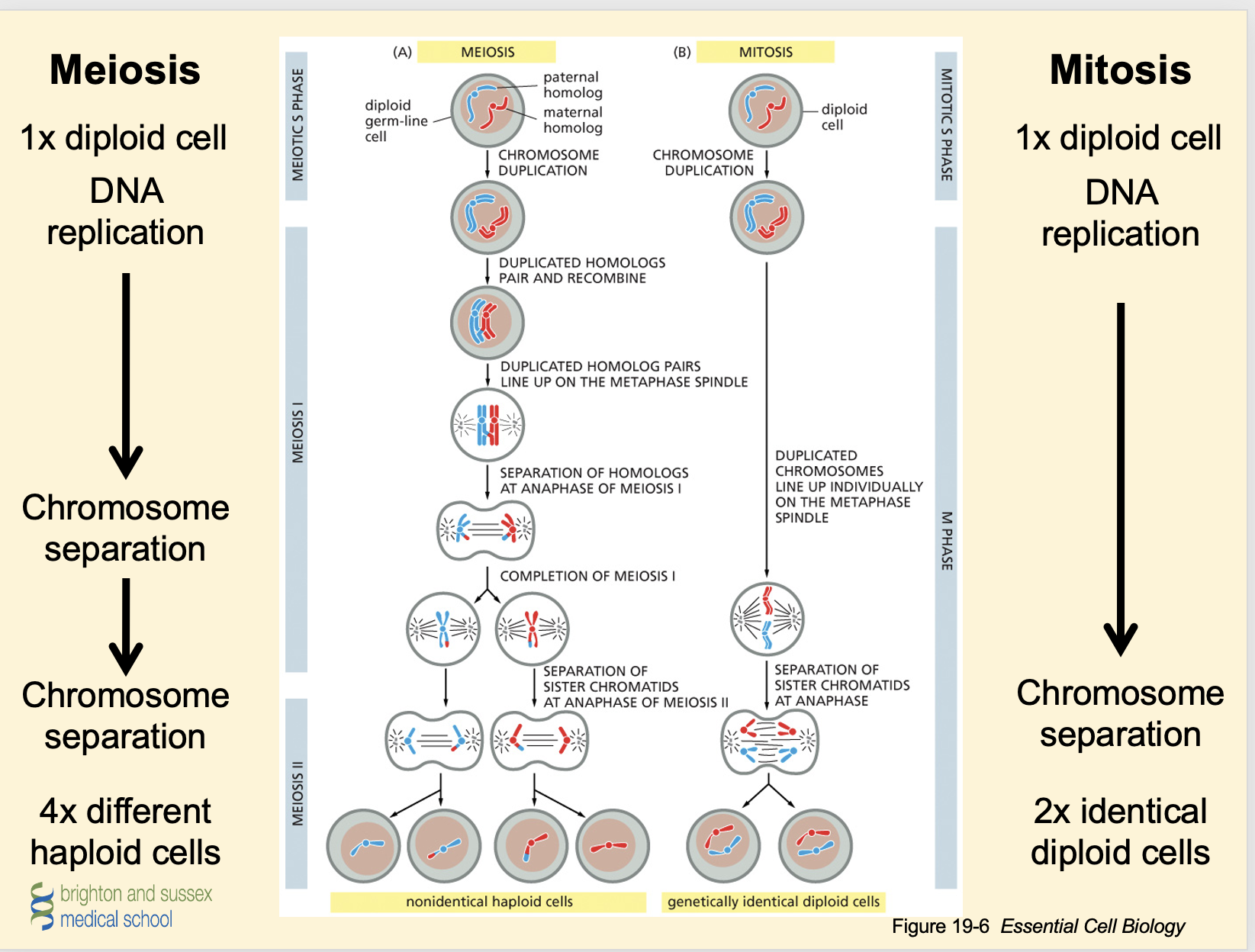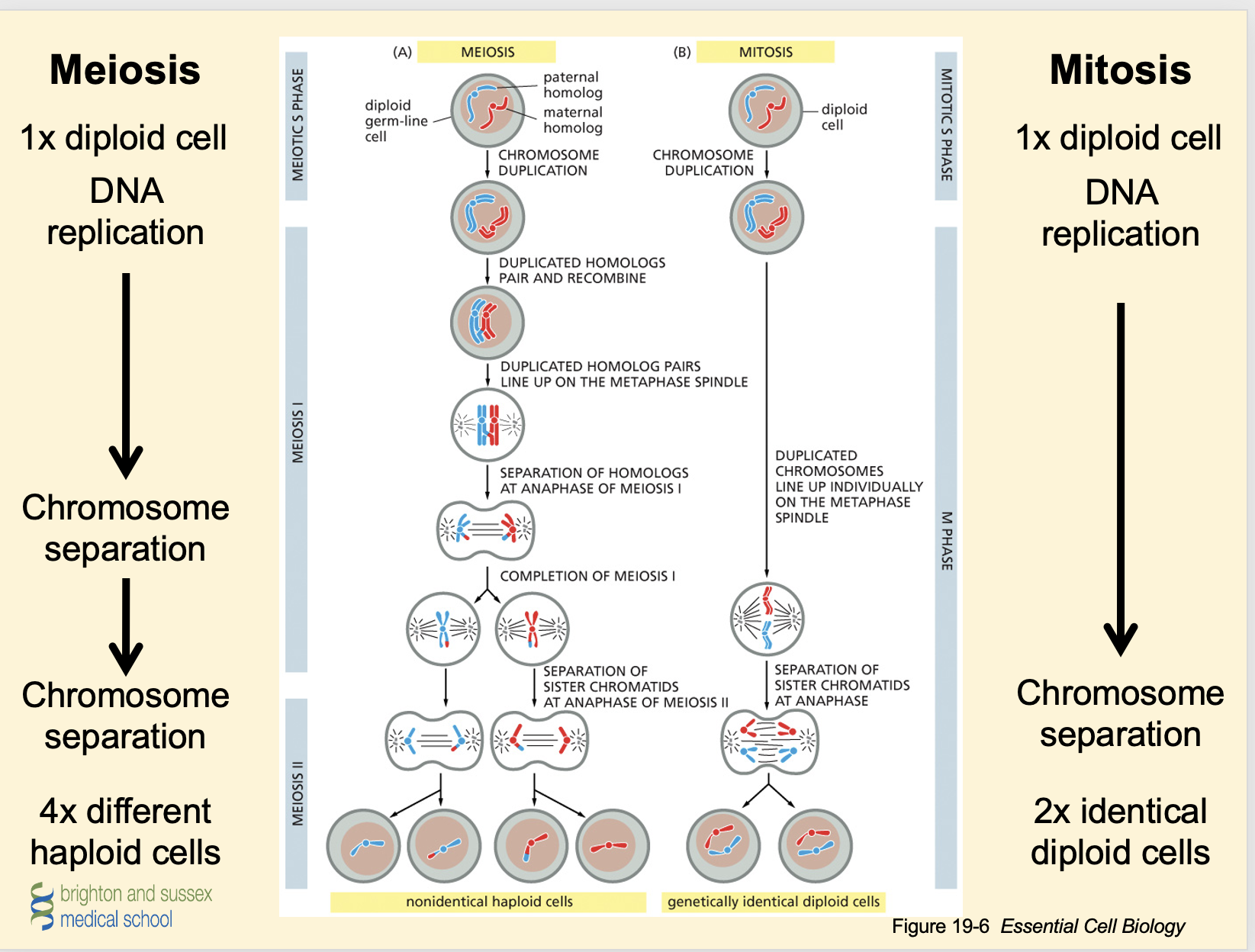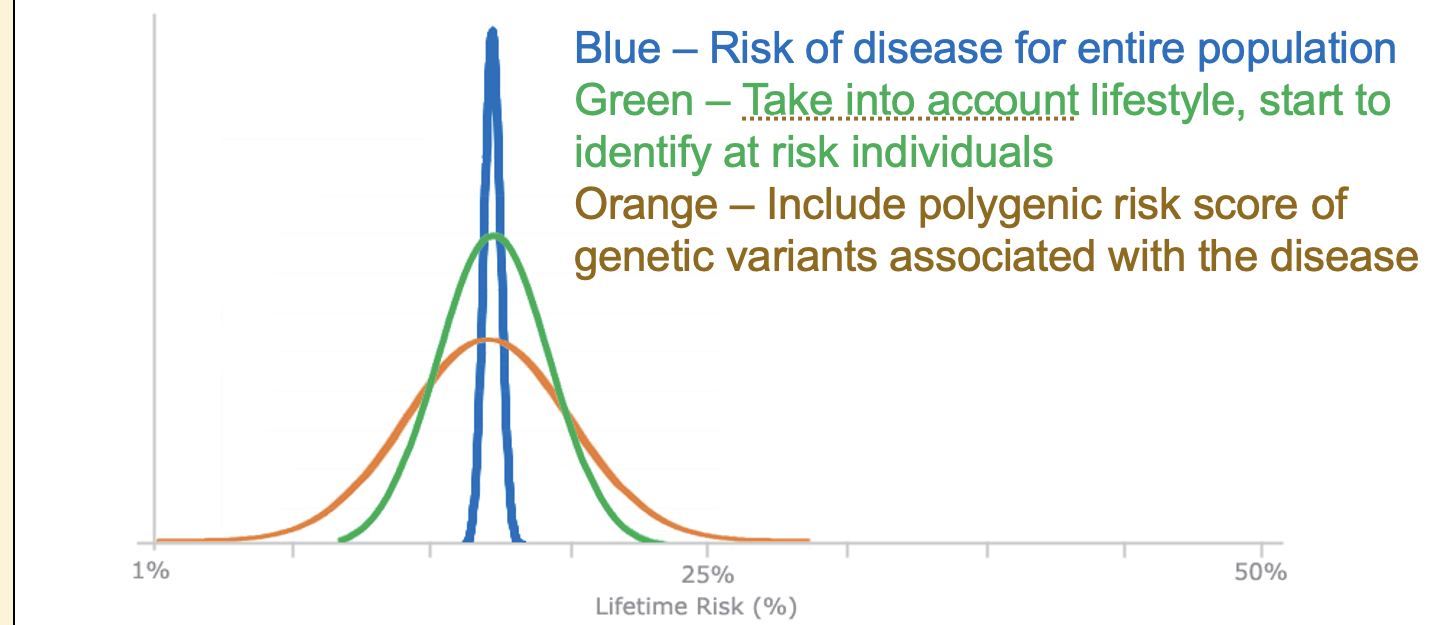Inheritance and Genetic Diseases
1/24
There's no tags or description
Looks like no tags are added yet.
Name | Mastery | Learn | Test | Matching | Spaced |
|---|
No study sessions yet.
25 Terms
Why sexual reproduction?
Results in greater genetic variation; this allows
Beneficial combinations of genes to come together
Deleterious combinations of genes to be removed
To survive the fight against microbes (Red Queen hypothesis
How is genetic variation generated?
Mutation (errors in DNA replication and repair)
2. Diploid cells (inherit one set of chromosomes from each parent)
3. Homologous recombination (HR) between chromosomes during meiosis
Differences between meiosis and mitosis

Meiosis I steps
Interphase: the DNA replicates so there are now two identical copies of each chromosome (referred to as chromatids).
Prophase I: chromatids condense and arrange themselves into homologous pairs (called bivalents). Crossing over occurs (see below). The nuclear envelope disintegrates and spindle fibres form.
Metaphase I: homologous chromosomes line up along the equator and attach to the spindle fibre by their centromeres.
Anaphase I: homologous chromosomes are separated
Telophase I: chromosomes reach opposite poles of the cell. Nuclear envelope reforms around the chromosomes. Cytokinesis results in the formation of two daughter cells.
Meiosis II steps
Prophase II: chromosomes condense, nuclear envelope disintegrates and spindle fibres form.
Metaphase II: chromosomes attach to the spindle fibre by their centromeres.
Anaphase II: sister chromatids are separated.
Telophase II: chromatids reach opposite poles of the cell. Nuclear envelope reforms and cytokinesis takes places. Four genetically unique daughter cells are produced.
Homologous Recombination
Occurs during long prophase of meiosis I
2-3 crossover events/chromosome/meiosis
Highly similar DNA sequence binds to complementary sequence on homologous chromosome

Where does crossover occur'?
Crossovers between homologs in the human testis
4 copies of every chromosome lined up in prophase meiosis I
Genetic variation during gamete formation
Independent Assortment
Homologous Recombination
Is trisomy fatal?
Trisomy usually fatal
(unless 21, 13 or 18)
What is Patau’s Syndrome?
Trisomy 13
What is Edward’s syndrome?
Trisomy 18
Is monosomy fatal?
Monosomy fatal unless X chromosome:
Turner syndrome in females
XXY-
XXX-
XYY-
XXY: Klinefelter syndrome (male, reduced fertility, lower IQ) May go undiagnosed
XXX: undiagnosed
XYY: undiagnosed
Why does age increase trisomies?
Risk of non-dysjunction increases with maternal age Important element of pre-natal testing
How are genetic diseases passed down through the generations?
Autosomal Dominant
Autosomal Recessive
X-linked
Family history: Genetic Counselling
What are autosomal chromosomes?
Autosomal chromosomes = not sex chromosomes
Define genotype
Set of genes carried by an individual
Define phenotype
Observable characteristic of an organism
Sickle Cell Disease: Heterozygote Advantage
Positive selection for HbS allele in malaria endemic areas
Malaria parasites unable to replicate as well inside heterozygote (carrier) red blood cells…therefore SCD allele retained in the population
Sickle cell disease common in African/Caribbean families
SCD carriers more resistant to malaria
X-linked recessive disease: Haemophilia A
Blood clots slowly
Bleeding
Easy bruising
Haemorrhages
Risk for surgery/trauma
Lack of blood clotting
factor VIII
X-linked recessive trait
Deletions or inversions in F8 gene
Resulting in loss of function
Haemophilia son
Distinctive inheritance pattern
50% chance of son inheriting from carrier mother
X linked recessive disorders
Duchenne muscular dystrophy
Red-green colour blindness
Haemophilia
Polygenic disease
Genetic contribution to disease dependent on complex mendelian relationships between multiple alleles (plus impact of environment)
Disease phenotypes revealed later in life, so snps remain common (i.e. not selected against)
Difficult to quantify risk
What is polygenic risk score?
Combine gene variants associated with a specific disease together to give a polygenic risk score
